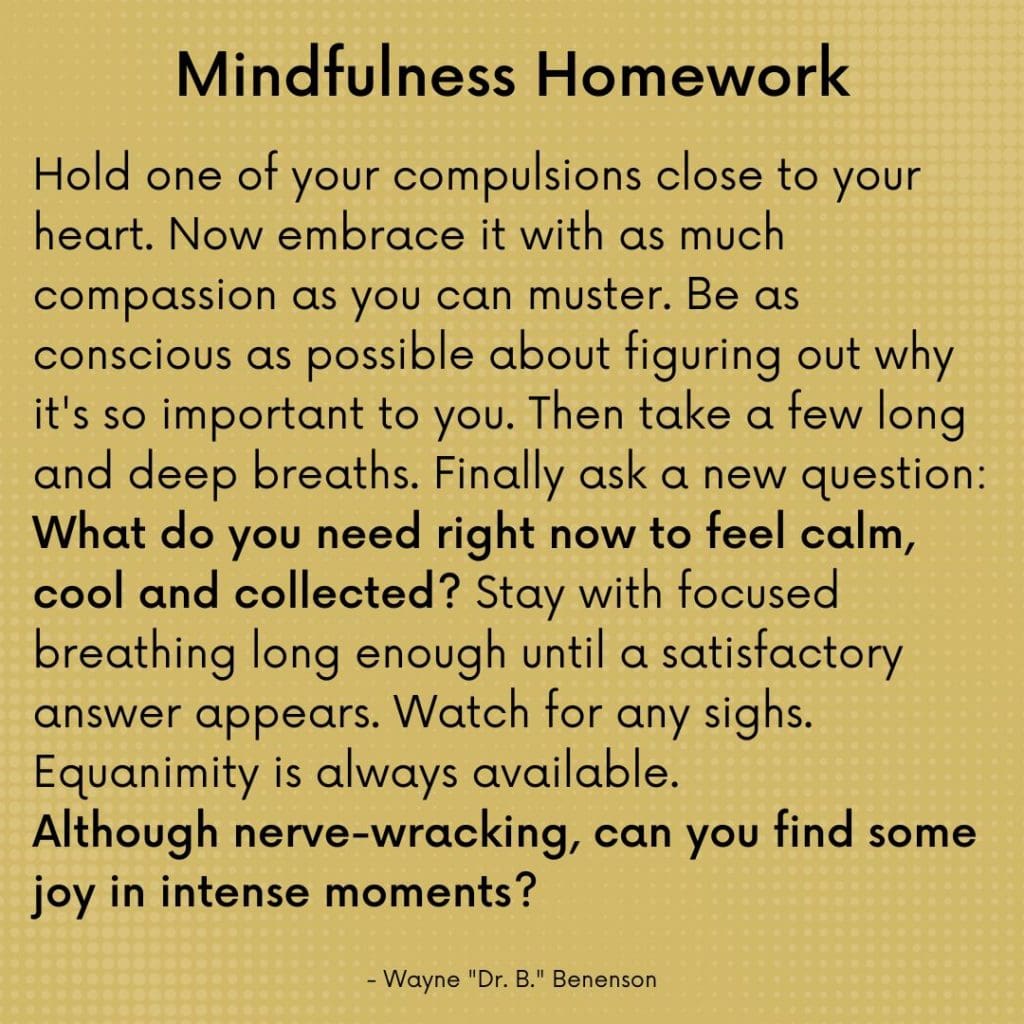Although this is billed as the season to be jolly, it’s all too easy to become a holiday harpy. How can mindfulness help?
This month’s blog is about a healthier way to respond when everything in your path goes sideways. This is for those moments when you feel cornered and crippled by too much crazy-making. This is a piece about meeting life, no matter what comes up, with an open and responsive heart. This is an article on equanimity.
Some schools of thought divide mindfulness into two equal components: present-time awareness and equanimity. They represent two sides of a balance scale, one side focusing on paying attention to what is happening right now and the other side on accepting whatever is happening without judgment or compulsion.
Equanimity is a fancy name for mental calmness and composure, especially in difficult situations. The Dalai Lama captured the essence of this evenness of temper: “With equanimity, you can deal with situations with calm and reason while keeping your inner happiness.”
What makes equanimity particularly tricky is accessing that place of calm precisely when we are zapped by a whirlwind of stress. All too often we snap – verbally or physically – when the incoming signals of distress are more than our “known” resources can handle. It’s hard to remain calm when your last good nerve is frayed. But not impossible.

Equanimity enables us to know the energetic movements of the mind without reactivity. It is an experience of grounded presence in the midst of excess, a balancing point between suppressing an experience and the entanglement of an experience. Mindfulness can expand our “known” resources by acknowledging what is happening with curiosity and responding (rather than reacting) to what is needed.
Here’s an example. I am a teacher at a national tutoring center. My job is a total delight when I have only one student at my table, challenging when I have two students to attend to simultaneously and befuddling with three students. Such was the case recently when all three students finished their exercises at the same time and wanted me to grade their work immediately so they could get a token. OMG, I felt flooded and paralyzed. What to do? What to do?
So I stalled, mostly to buy time. To the first chirping bird, the most demanding of the bunch, I said, “So many to grade. Let me do yours first. Help me do a good job of grading by taking some mindful breaths. Breathe with me … slowly – inhale, exhale … inhale, exhale.”
As I returned to grading his assignment, I turned to the second chirping bird and said, “You’re so good at sounding out the syllables of words. I’ll give you an extra token if you can put your vocabulary flash cards words into categories of one syllable, two syllable and three syllable words.”
To the third chirping bird I asked, “What was the most difficult word or phrase on your assignment? Go look. How many tries did it take to figure it out?” That tactic worked. I was able to negotiate that moment of pressure with some aplomb. However, truth be told, after several similar interactions during the hour, my energy balance was severely depleted. When I finished my session for the day I was exhausted. I did not linger to talk with colleagues afterward. I needed a nap!
Equanimity is about not fighting with our inner experience. We can’t always control the flow of pleasure or pain in our life, but practicing equanimity can lead us to have more confidence in meeting challenges as they arise.
We can find our balance by turning our attention momentarily away from a difficulty or by focusing on them in a calm and steady way. And this skill can be learned. Every time we have an itch and don’t scratch it, we’re developing equanimity.
When we don’t allow petty annoyances to spin out of control, we are practicing equanimity. When we experience some kind of intensity, and neither try to make it last nor vanish, we are practicing equanimity. We can replace a narrow perspective with a wider perspective. May you end your war within.

Dr. B, aka Wayne Benenson, Ph.D., has had lots of career opportunities to be mindful: as an elementary and early childhood teacher, a college professor and a researcher on peer mediation. He currently offers mindfulness tutorials, short and sweet (20 minutes), via Zoom. For more information check out his Facebook page at or contact him here.




